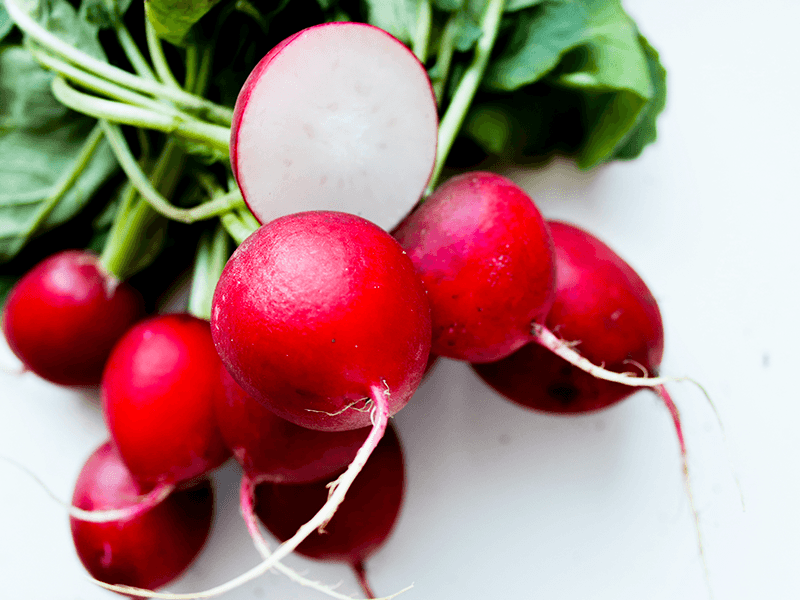What are Cool Season Vegetables?
Cool season vegetables are plants that grow best in cool weather, usually between 40°F and 75°F (4°C and 24°C). They can withstand light frosts and even snow in some cases. Most of them are grown for their leaves, stems, roots, or immature flowers.
Some of the benefits of growing cool season vegetables are:
- They can extend your gardening season by allowing you to start earlier in spring and continue later in fall.
- They can provide you with fresh, nutritious, and delicious produce when other crops are not available.
- They can improve your soil quality by adding organic matter and preventing erosion.
- They can attract beneficial insects and pollinators to your garden.
- They can save you money by reducing your grocery bills and food waste.
Popular Cool Season Vegetables to Grow
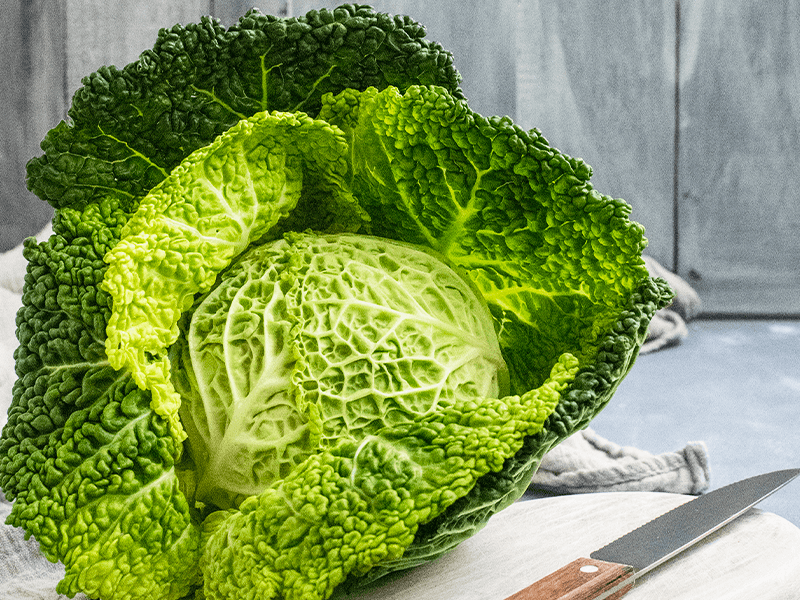
There are many cool season vegetables to choose from, but here are some of the most popular ones:
- Broccoli: Broccoli is a member of the cabbage family that produces green or purple flower heads that are rich in vitamin C, fiber, and antioxidants. Broccoli prefers full sun and well-drained soil with a pH of 6.0 to 7.0. It can be planted from seed or transplanted about 4 to 6 weeks before the last frost date in spring or 10 to 12 weeks before the first frost date in fall. Broccoli matures in 50 to 100 days depending on the variety.
- Kale: Kale is a leafy green vegetable that belongs to the same family as broccoli. It has curly or flat leaves that range from green to purple in color. Kale is high in vitamin A, K, C, iron, calcium, and antioxidants. Kale likes full sun or partial shade and moist, fertile soil with a pH of 5.5 to 6.8. It can be sown directly in the garden or started indoors about 4 to 6 weeks before the last frost date in spring or 6 to 8 weeks before the first frost date in fall. Kale matures in 55 to 75 days depending on the variety.
- Spinach: Spinach is a leafy green vegetable that has smooth or crinkled leaves that are dark green in color. Spinach is a good source of vitamin A, C, E, K, folate, iron, magnesium, and antioxidants. Spinach likes full sun or partial shade and well-drained soil with a pH of 6.0 to 7.0. It can be sown directly in the garden as soon as the soil can be worked in spring or 6 to 8 weeks before the first frost date in fall. Spinach matures in 40 to 60 days depending on the variety.
- Lettuce: Lettuce is a leafy vegetable that comes in many shapes, colors, and textures. It is low in calories but high in water content, vitamin A, K, C, folate, and antioxidants. Lettuce prefers full sun or partial shade and moist, fertile soil with a pH of 6.0 to 7.0. It can be sown directly in the garden or started indoors about 4 to 6 weeks before the last frost date in spring or 6 to 8 weeks before the first frost date in fall. Lettuce matures in 30 to 80 days depending on the variety.
- Carrots: Carrots are root vegetables that have orange, yellow, red, purple, or white flesh and green tops. Carrots are rich in vitamin A, K, C, B6, fiber, potassium, and antioxidants. Carrots like full sun and loose, sandy soil with a pH of 5.5 to 7.0. They can be sown directly in the garden about 3 to 5 weeks before the last frost date in spring or 10 to 12 weeks before the first frost date in fall. Carrots mature in 50 to 80 days depending on the variety.
- Radishes: Radishes are root vegetables that have white, red, pink, purple, or black flesh and green tops. Radishes are crunchy and spicy and have vitamin C, B6, fiber, potassium, and antioxidants. Radishes like full sun or partial shade and well-drained soil with a pH of 5.5 to 7.0. They can be sown directly in the garden as soon as the soil can be worked in spring or 4 to 6 weeks before the first frost date in fall. Radishes mature in 20 to 60 days depending on the variety.
These are just a few of the chilly season veggies you may plant in your garden. There are many more, including cauliflower, brussels sprouts, cabbage, arugula, swiss chard, beets, turnips, parsnips, peas, and onions.
How to Care for Cool Season Vegetables
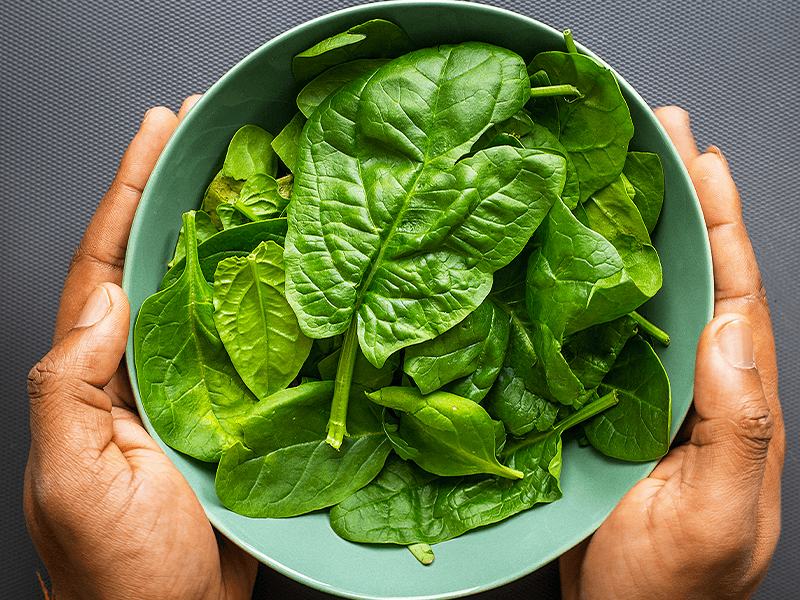
Cool season vegetables need some basic care to grow well and produce a good harvest. Here are some tips on how to care for them:
- Soil preparation and maintenance: Cool season vegetables need fertile, well-drained soil that is rich in organic matter. Before planting, you should loosen the soil and remove any rocks, weeds, or debris. You should also add some compost or well-rotted manure to improve the soil structure and nutrient content. You can also test your soil pH and adjust it if needed with lime or sulfur. Throughout the growing season, you should keep the soil moist but not soggy by watering regularly and mulching with organic materials such as straw, leaves, or grass clippings.
- Watering and irrigation: Cool season vegetables need consistent moisture to grow well and prevent bolting or cracking. You should water them deeply and evenly at least once a week or more often if the weather is hot or dry. You can use a drip irrigation system or a soaker hose to deliver water directly to the roots and avoid wetting the foliage. You should also avoid watering in the evening or at night to prevent fungal diseases.
- Fertilizing: Cool season vegetables need regular feeding to support their growth and yield. You should apply a balanced organic fertilizer such as fish emulsion, seaweed extract, or compost tea every two to four weeks during the growing season. You can also side-dress your plants with compost or manure halfway through the season to give them a boost of nutrients.
- Pruning and deadheading: Cool season vegetables may need some pruning and deadheading to improve their appearance and health. You should remove any yellowing or diseased leaves from your plants to prevent the spread of infections and pests. You should also cut off any flowers that form on your plants (except for broccoli and cauliflower) to prevent them from going to seed and becoming bitter. You can also thin out your plants if they are overcrowded to improve air circulation and light penetration.
- Pest and disease control: Cool season vegetables may attract some pests and diseases that can damage your crops. Some of the common pests include aphids, cabbage worms, flea beetles, slugs, snails, and rodents. Some of the common diseases include powdery mildew, downy mildew, black rot, clubroot, and damping off. To prevent or control these problems, you should practice good sanitation by removing any plant debris from your garden and rotating your crops every year. You should also use row covers or netting to protect your plants from insects and animals. You can also use organic pesticides or fungicides such as neem oil, diatomaceous earth, or baking soda if needed.
Tips for Growing Cool Season Vegetables
Growing cool season vegetables can be rewarding and fun if you follow some simple tips.
The best time to plant cool season vegetables depends on your climate and the type of vegetable you are growing. Generally speaking, you should plant them about 4 to 6 weeks before your last frost date in spring or 10 to 12 weeks before your first frost date in fall. However, some vegetables such as lettuce, spinach, radishes and carrots can be planted as soon as the soil can be worked in spring or 4 to 6 weeks before the first frost date in fall. You can use a planting calendar or a frost date calculator to find out the best planting times for your area.
Companion planting is a technique of growing different plants together that benefit each other in some way. For example, some plants can repel pests, attract pollinators, improve soil quality, or enhance flavor. Some of the good companions for cool season vegetables are:
- Broccoli: Basil, dill, garlic, marigolds, mint, nasturtiums, onions, rosemary, sage, and thyme.
- Kale: Beets, celery, dill, garlic, lettuce, mint, onions, potatoes, rosemary, and sage.
- Spinach: Cabbage, cauliflower, celery, eggplant, lettuce, peas, radishes, and strawberries.
- Lettuce: Beets, carrots, cucumbers, garlic, onions, radishes, spinach, and strawberries.
- Carrots: Beans, chives, leeks, lettuce, onions, peas, radishes, rosemary, and sage.
- Radishes: Beans, beets, carrots, chervil, cucumbers, lettuce, melons, peas, spinach, and squash.
Cool season vegetables need enough space and light to grow well and produce a good harvest. You should follow the spacing and depth recommendations on your seed packets or plant labels when planting your cool season vegetables. You should also arrange your plants in a way that maximizes their exposure to sunlight and minimizes their competition for water and nutrients. For example:
- Plant taller vegetables such as broccoli and kale on the north side of your garden bed to avoid shading shorter vegetables such as lettuce and radishes.
- Plant leafy vegetables such as spinach and lettuce in rows or blocks rather than in single file to create a microclimate that retains moisture and reduces weeds.
- Plant root vegetables such as carrots and radishes in loose soil that allows them to expand easily and avoid rocks or clumps that can deform them.
- Plant fast-growing vegetables such as radishes and spinach between slower-growing vegetables such as broccoli and kale to make use of the empty space and harvest them before they interfere with each other.
Cool season vegetables need fertile soil that is rich in organic matter and has the right pH level for optimal growth. You should test your soil before planting your cool season vegetables to find out its nutrient content and pH level. You can use a soil test kit or send a soil sample to a local extension service for analysis. Based on the results of your soil test, you can amend your soil with organic materials such as compost or manure to improve its structure and nutrient content. You can also adjust its pH level with lime or sulfur if needed.
Mulching is a practice of covering the soil around your plants with organic materials such as straw, leaves, or grass clippings. Mulching has many benefits for cool season vegetables, such as:
- It helps retain soil moisture and reduce evaporation
- It moderates soil temperature and protects plants from frost
- It suppresses weeds and prevents them from competing with your plants for water and nutrients
- It adds organic matter and nutrients to the soil as it decomposes
- It prevents soil erosion and compaction
You should apply a 2 to 4 inch layer of mulch around your cool season vegetables after planting them or when they are about 4 inches tall. You should also replenish the mulch as needed throughout the growing season.
Weed control is also important for cool season vegetables, as weeds can reduce your yield and quality by competing with your plants for space, light, water, and nutrients. You should remove any weeds from your garden before planting your cool season vegetables and keep them under control by hand-pulling, hoeing, or using organic herbicides if necessary.
Harvesting and Storage of Cool Season Vegetables
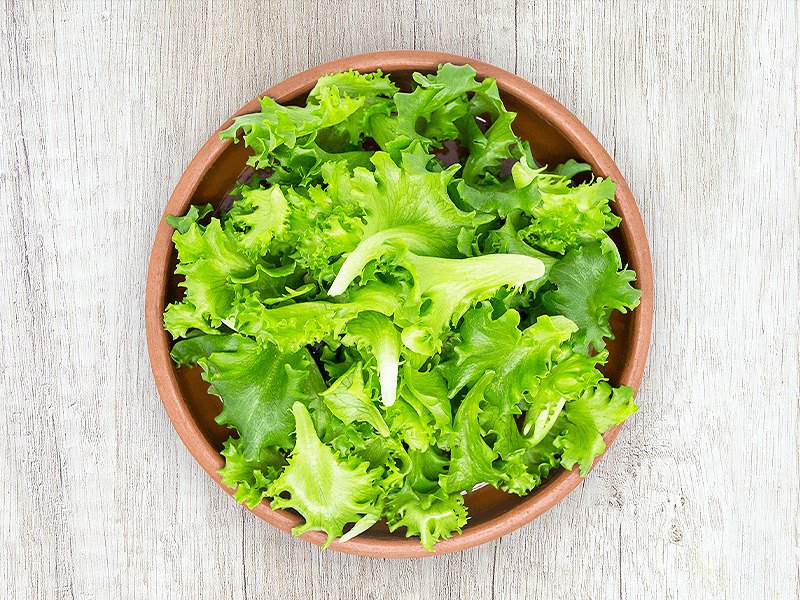
One of the most satisfying aspects of cultivating chilly season veggies is harvesting them. Produce from your own garden is incomparable to anything you can get at the store in terms of freshness, crispness, and flavor. The following advice will help you harvest and preserve your crops from the cool season:
1. Harvesting advice: Depending on the type of vegetable and your personal preferences, the optimum time to harvest vegetables in the cool season varies. Generally speaking, you ought to choose them when they are still soft, young, and flavorful. Additionally, as they are cooler and less prone to wilting in the morning or evening, you should harvest them then. To harvest some popular cool-season veggies, follow these tips:
- Broccoli: Harvest broccoli when the flower heads are firm and green, before they start to turn yellow or open. Cut the main stem about 6 inches below the head and leave some leaves on the plant to encourage side shoots.
- Kale: Harvest kale when the leaves are young and tender, about 6 to 10 inches long. Cut or snap off individual leaves from the bottom up, leaving the center stem intact.
- Spinach: Harvest spinach when the leaves are large enough to eat, about 3 to 6 inches long. Cut or snap off individual leaves or whole plants at the base.
- Lettuce: Harvest lettuce when the leaves are crisp and tender, before they start to bolt or become bitter. Cut or snap off individual leaves or whole heads at the base.
- Carrots: Harvest carrots when the roots are about 1/2 to 1 inch in diameter, or larger if you prefer. Loosen the soil around the roots with a fork or trowel and pull them out gently by their tops.
- Radishes: Harvest radishes when the roots are about 1/2 to 1 inch in diameter, or smaller if you like them spicy. Pull them out by their tops and trim off any excess foliage.
2. Storing cool season vegetables for longer shelf life: Storing cool season vegetables properly can help you preserve their freshness, quality, and nutrition for longer periods of time. You can store most cool season vegetables in a cool, dark, and humid place such as a refrigerator, a cellar, or a root cellar. Here are some tips for storing some common cool season vegetables:
- Broccoli: Store broccoli in a plastic bag with some holes in the refrigerator for up to a week. You can also blanch and freeze broccoli for up to a year.
- Kale: Store kale in a plastic bag with some holes in the refrigerator for up to a week. You can also blanch and freeze kale for up to a year.
- Spinach: Store spinach in a plastic bag with some holes in the refrigerator for up to a week. You can also blanch and freeze spinach for up to a year.
- Lettuce: Refrigerate lettuce in a plastic bag with some holes for up to a week. You can alternatively wash and dry lettuce before storing it for up to two weeks in an airtight container lined with paper towels.
- Carrots: Store carrots in a plastic bag with some holes in the refrigerator for up to two weeks. You can also chop off the tops and preserve them for up to three months in a bucket of sand or peat moss in a cool spot.
- Radishes: Radishes may be kept in the fridge for up to two weeks when placed in a plastic bag with some holes. You may also remove the tops and keep them in a jar of water in the refrigerator for up to a month.
3. Preserving cool season vegetables for later use: Preserving cool season vegetables can help you enjoy their flavor and nutrition throughout the year. You can preserve most cool season vegetables by freezing, canning, drying, pickling, or fermenting them. Here are some tips for preserving some common cool season vegetables:
- Broccoli: blanch and preserve broccoli for up to a year in freezer bags or containers. Broccoli may also be pickled or fermented for up to a year in vinegar or brine.
- Kale: Blanch and store for up to a year in freezer bags or containers. Kale may also be dried in the oven or dehydrator and stored in an airtight container for up to a year.
- Spinach: Blanch spinach and store it in freezer bags or containers for up to a year. You may also dry or bake spinach for up to a year and store it in an airtight container.
- Lettuce: Although lettuce does not freeze or can well, it may be dried and kept in an airtight container in a dehydrator or oven for up to a year. After mixing lettuce, garlic, nuts, cheese, oil, and salt, freeze it in ice cube trays for up to six months.
- Carrots: Peel and chop carrots and freeze in freezer bags or containers for up to a year. Carrots may also be pickled or fermented in vinegar or brine for up to a year.
- Radishes may be kept for up to a year in freezer bags or containers. Radishes may also be fermented or pickled for up to a year in vinegar or brine.
Popular Recipes for Cool Season Vegetables
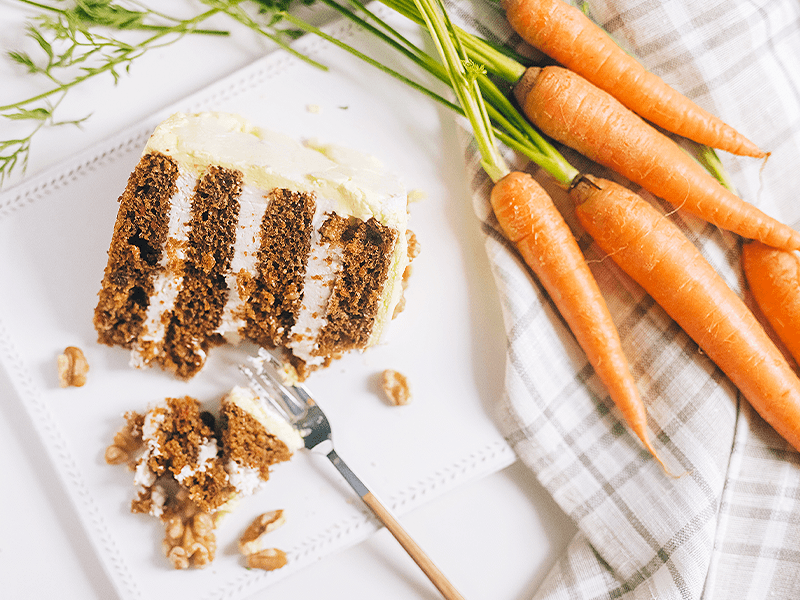
Cool season vegetables are versatile and delicious ingredients that can be used in many different dishes. You can enjoy them raw, cooked, roasted, sautéed, steamed, boiled, baked, or grilled. You can also make salads, soups, stews, casseroles, stir-fries, curries, pies, quiches, frittatas, gratins, and more with them.
Here are some popular recipes for cool season vegetables that you can try:
- Broccoli Cheese Soup: This creamy and cheesy soup is simple to prepare and delicious to eat. Broccoli, onion, garlic, butter, flour, chicken broth, milk, cheese, salt, and pepper are all you need. For added crunch, add some bacon bits or croutons.
- Kale Chips: This crunchy and healthful snack is an excellent way to use up leftover kale. All you need are kale leaves, olive oil, salt, and whatever seasonings you choose. You can either bake or air-fry them till crisp.
- Spinach Artichoke Dip: This delicious, creamy dip is ideal for parties and get-togethers. Spinach, artichoke hearts, cream cheese, sour cream, mayonnaise, garlic, parmesan cheese, mozzarella cheese, salt, and pepper are all you need. Bake it till bubbling and serve it with bread, crackers, chips, or vegetables.
- Lettuce Wraps: A light and refreshing lunch or dinner option. Lettuce leaves, cooked chicken, beef, pork, tofu, or shrimp, onion, garlic, ginger, soy sauce, hoisin sauce, rice vinegar, sesame oil, sriracha sauce, salt, and pepper are all you need. For added taste and texture, add some carrots, mushrooms, water chestnuts, peanuts, or cilantro.
- Carrot Cake: A classic treat that everyone enjoys, this moist and tasty cake. Carrots, flour, baking soda, baking powder, salt, cinnamon, nutmeg, eggs, sugar, oil, vanilla extract, walnuts or pecans, and cream cheese icing are the only ingredients required. Bake it in a cake pan or a bundt pan and top with additional nuts or shredded coconut.
- Radish Salad: This easy and delicious salad is made with fresh and crunchy radishes. Radishes, cucumber, onion, parsley, lemon juice, olive oil, salt, and pepper are all you need. For added tanginess, add some feta cheese or olives.
Conclusion
Cool season vegetables are a fantastic addition to both your garden and your cooking. When other crops are unavailable in the spring and fall, they may provide you with fresh, nutritious, and tasty vegetables. They may also aid in the improvement of soil quality and the attraction of beneficial insects and pollinators to your garden.
Growing cool season vegetables is simple if you follow some basic guidelines and take adequate care of them. In your garden, you can grow a variety of chilly season veggies such as broccoli, kale, spinach, lettuce, carrots, and radishes. You can also harvest and store them for a longer shelf life for subsequent usage.
Cool season vegetables are also versatile and delicious ingredients that can be used in many different dishes. You can make salads, soups, stews, casseroles, stir-fries, curries, pies, quiches, frittatas, gratins, and more with them. You can also make snacks, dips, chips, cakes, and salads with them.
Cool season vegetables are a great way to enjoy gardening and eating in spring and fall. They can offer you many benefits and rewards for your efforts. So why not start growing some cool season vegetables in your garden today? You will be glad you did!
Frequently Asked Questions (FAQs) about Cool Season Vegetables
1. What are Cool Season Vegetables, and When Should I Plant Them?
Cool season vegetables are plants that thrive in cooler temperatures and are typically grown during the fall and spring seasons. These include crops like lettuce, broccoli, carrots, and spinach. The best time to plant cool season vegetables depends on your location and local climate. In most regions, you can start planting them in early spring as soon as the soil can be worked, and then again in late summer for a fall harvest. Be sure to check your specific plant hardiness zone for precise planting dates.
2. Which Cool Season Vegetables Are Ideal for Beginners?
If you’re new to gardening, it’s a good idea to start with easy-to-grow cool season vegetables like lettuce, radishes, and spinach. These plants are relatively low-maintenance and can thrive in cooler conditions. They also have a shorter growing season, allowing you to see results sooner. As you gain experience, you can gradually expand your garden to include more challenging varieties.
3. How Do I Care for Cool Season Vegetables?
Cool season vegetables require some specific care to ensure a successful harvest. They generally prefer well-draining soil rich in organic matter. Adequate watering is crucial, and you should aim to keep the soil consistently moist but not waterlogged. Using mulch can help regulate soil temperature and moisture. Additionally, monitor for common pests and diseases and consider using natural or organic pest control methods to protect your crops.
4. Can I Order Cool Season Vegetables from Your Online Store?
Yes, our online store offers a variety of cool season vegetable seeds and starter plants. We carefully select and source high-quality seeds and plants to ensure a successful growing experience for our customers. You can browse our selection, place an order, and have them delivered to your doorstep. We also provide helpful tips and resources to guide you through the planting and care process.
5. What Should I Do to Extend the Harvest Season for Cool Season Vegetables?
To extend the harvest season for cool season vegetables, you can employ a few strategies. Successive planting, where you sow seeds or transplant seedlings at intervals, can ensure a continuous supply of fresh produce. You can also use row covers or cold frames to protect plants from frost, allowing you to harvest later into the fall or early winter. Finally, selecting varieties with longer maturity dates can extend your harvest window, so be sure to check the seed packet for specific information on each vegetable’s growth timeline.
Published: 14.04.2023

